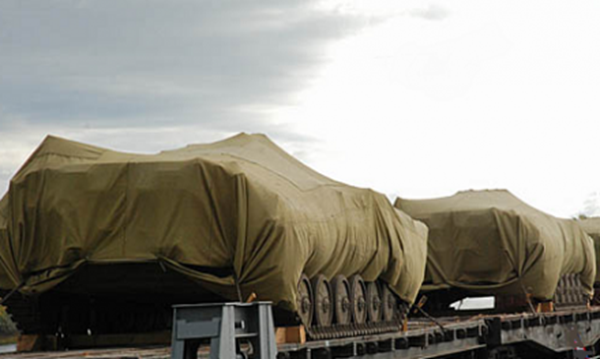Russia loses $13 billion on arms deals
With increasing frequency, Russia is receiving no payment for its arms exports, which are second in quantity only to the US’s, due to the practice of giving loans to buyers, and due to US sanctions blocking dollar transactions.
At the end of 2018, the accounts receivable on the balance sheet of Russia’s defense export agency, RosOboronExport, including all of the debt for arms that were delivered but not paid for, reached 812.9 billion rubles, around $13 billion at current exchange rates, RBC reports, citing the company’s financial report, which it obtained through the Russian State Statistics Service.
Over the year, the amount owed by counterparties to RosOboronExport grew by $2.37 billion, or 23%.
Compared to 2014, this gap in the company’s balance sheet has more than doubled, reaching $7.1 billion.
The accounts receivable can also include advances to Russian defense factories or foreign component suppliers, but the not yet paid funds for delivered products, including non-payment due to sanctions, account for the majority of the nearly 1 trillion rubles that are owed, a source close to RosOboronExport explained to RBC news agency.
Alongside the direct debt from buyers, who either buy using Russian loans, or simply do not pay, “there are probably funds that were actually paid, but got stuck in the banks because they came under sanctions, and there’s no way to withdraw them,” the source noted.
“The presence of debt is a completely normal phenomenon,” said an official spokesperson for RosOboronExport. The company, he explained, is a state intermediary, which has obligations both to consignors and to clients.
RosOboronExport has no shortage of cash on hand. At the end of the year, it had 110 billion rubles ($1.7 billion) in cash or its equivalents. However, the defense factories do have a problem, having accumulated roughly $31 billion in debt, of which $10.9 billion is irrecoverable, lamented Deputy Prime Minister Yury Borisov, who oversees the defense industry sector, in July.
Borisov speculated that, by writing off the amount owed to Russian banks, the military-industrial complex could save roughly $1.1 billion per year and invest more than $1 billion in the expansion of production or in diversification.
RosOboronExport has been under US sanctions since November 2017. Since the end of January last year, the US Treasury Department has been authorized to impose restrictions on any organizations that are involved in “significant deals” with Russian defense industry enterprises. This includes both the buyers of the weapons and the banks that facilitate the transactions.
By the start of 2018, the US Department of State estimated that the US had managed to block 20% of RosOboronExport’s deals, to a value of $3 billion.
According to Jane’s, Russia earned $8.48 billion from arms sales in 2018, making it second only to the US ($32.75 billion).
By 2020, Jane’s predicts that Russian weapons will have lost approximately 17% of their current market share, with sales falling to $6.85 billion. France could overtake Russia as the second largest arms exporter, since its sales are expected to grow to $6.96 billion from the sale of Rafale fighters to India and due to an increased demand for helicopters.
